Meredith Sue Willis's
Books for Readers #128
February 1, 2010
MSW Home
For a free email subscription to Books for Readers,
send a blank email to Readerbooks-subscribe@topica.com
Featured This Issue:
Jeffrey Sokolow on the Fiftieth Anniversary
of the Greensboro Lunch Counter Sit-ins and more
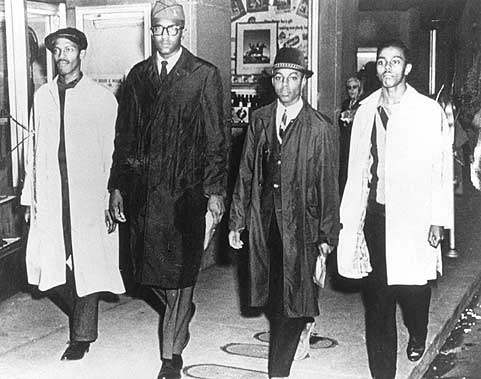
Ezell A. Blair, Jr. (now Jibreel Khazan), Franklin E. McCain, Joseph A. McNeil,
and David L. Richmond leave the Woolworth store after
the first sit-in on February 1, 1960.
If you want to link to something in this newsletter, you should use the permanent link here rather than this page, which changes each issue.
February 1st is the 50th anniversary of the beginning of the Greensboro, NC Woolworth lunch counter sit-ins. I am honored to give you the main article here on books about the Civil Rights movement, especially SNCC, guest edited by Jeffrey Sokolow .
JEFFREY SOKOLOW ON THE FIFTIETH ANNIVERSARY
OF THE GREENSBORO LUNCH COUNTER SIT-INS:
FEBRUARY 1 - APRIL 15, 1960–2010 AND
REMEMBERING THE STUDENT NONVIOLENT COORDINATING COMMITTEE
As Tom Hayden notes early on in his recently published book, THE LONG SIXTIES: FROM 1960 TO BARACK OBAMA (Paradigm, 2009), this year we will be commemorating the 50th anniversary of every event that occurred in the 1960s. A good place to start might be February 1st, which marks the date on which four black students sat down at a segregated “whites only” lunch counter at a Woolworth's store in Greensboro, North Carolina, and asked to be served a cup of coffee, thereby sparking the sit-in movement that swept the south in the weeks and months that followed. Like a stone thrown into still water, that act set off ripples that resulted in the greatest mass democratic popular movement in American history.
A second significant date is April 15th, which will mark the 50th anniversary of a conference convened by Miss Ella Baker (then on the staff of the Southern Christian Leadership Conference [SCLC]-- See photo below right) at Shaw University in Raleigh, North Carolina. This meeting resulted in the formation of the Student Nonviolent Coordinating Committee (SNCC), which was to lead mass action campaigns to end racial segregation and conduct voter registration campaigns to enfranchise black citizens in the Deep South. This small group of dedicated 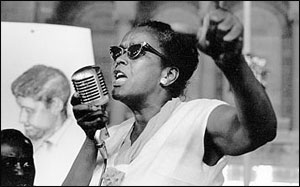 young men and women, together with the “local people” they found and empowered to lead themselves, were the “point of the spear” that finally broke the back of state-sanctioned apartheid and terrorism in the Deep South. SNCC workers wanted “more than a hamburger”; ultimately, they wanted a radical democratic restructuring of American society to benefit people on the bottom of the existing order.
young men and women, together with the “local people” they found and empowered to lead themselves, were the “point of the spear” that finally broke the back of state-sanctioned apartheid and terrorism in the Deep South. SNCC workers wanted “more than a hamburger”; ultimately, they wanted a radical democratic restructuring of American society to benefit people on the bottom of the existing order.
Confronting unrelenting segregationist resistance and KKK terrorism, betrayal by its putative allies in the liberal Democratic Party establishment, and resulting burnout and radicalization, SNCC lasted for only six years, ending in a cul-de-sac of sectarian ultra-radicalism that alienated it from its community base and finally destroyed the organization. But the courageous path that SNCC field workers blazed is a story every American who values freedom should honor and remember.
SNCC is the subject of an important new book, THE SHADOWS OF YOUTH: THE REMARKABLE JOURNEY OF THE CIVIL RIGHTS GENERATION by historian Andrew B. Lewis (Hill & Wang, 2009). Lewis draws on published and oral histories to paint a moving narrative history detailing the rise, fall, and afterlife of this important organization. Although Lewis omits some important events (e.g., the controversy over Mary King and Casey Hayden's "kind of memo" on the role of women in SNCC and H. Rap Brown's 2002 murder conviction for killing a black sheriff's deputy in Atlanta), his well-researched and well-written book tells a gripping story and shows both the strengths and shortcomings of key figures. An extensive bibliography leads to many other sources.
Two collections of oral histories shed light on the 1960s freedom movement in the South: CHILDREN OF THE MOVEMENT by John Blake (Lawrence Hill, 2004) and GENERATION ON FIRE: VOICES OF PROTEST FROM THE 1960s by Jeff Kisseloff (University Press of Kentucky, 2007). Blake's profile of the children of movement figures offers insights into the complex psychology of such individuals as James Farmer, Bob Moses, and Julian Bond. Kisseloff's collection, which spans the gamut of 1960s activism, includes moving oral histories by two incredibly brave SNCC workers, Bernard Lafayette and Bob Zellner. The latter's remarkable autobiography, THE WRONG SIDE OF MURDER CREEK: A WHITE SOUTHERNER IN THE FREEDOM MOVEMENT by Bob Zellner and Constance Curry (New South Books, 2008), gives a powerful account and is highly recommended.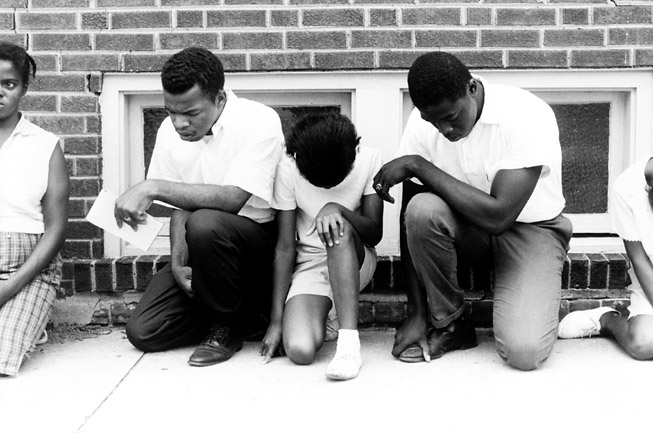
Black women played an important role in SNCC and in the freedom movement. SOON WE WILL NOT CRY: THE LIBERATION OF RUBY DORIS SMITH ROBINSON by Cynthia Griggs Fleming (Rowman & Littlefield, 1998) tells the story of an exceptionally courageous and forceful young woman who joined the freedom movement as a teenager, became executive secretary of the Student Nonviolent Coordinating Committee, and died of cancer at a very young age (25). Fleming examines issues of sexual politics in great depth and offers perceptive comments on the divergent perspectives of black and white women in SNCC. Her book is based on both published sources and extensive oral interviews with Ruby Doris Smith Robinson's movement colleagues.
A substantial proportion of the white northern students who joined the movement were Jews (such as Andrew Goodman and Michael Schwerner, who were murdered with James Chaney in Mississippi). In 1962, at the age of 19, Danny Lyon, a white Jewish kid from Chicago, went south with a camera to work with SNCC. Understanding the importance of documenting the struggle and the role of images in framing public perception, SNCC Executive Secretary James Forman put him to work as a photographer. Lyon’s oversized book, MEMORIES OF THE SOUTHERN CIVIL RIGHTS MOVEMENT (University of North Carolina Press, 1992), combines his iconic photographs with commentary, including on-the-spot reports, which document the incredible heroism and humanity of the SNCC staff and the "local people" they worked with in the Deep South. Like no other book on the movement I've seen, Lyon's book gives the reader a visceral sense of being there in the moment.
In no southern state was the movement faced with more vicious terrorism, 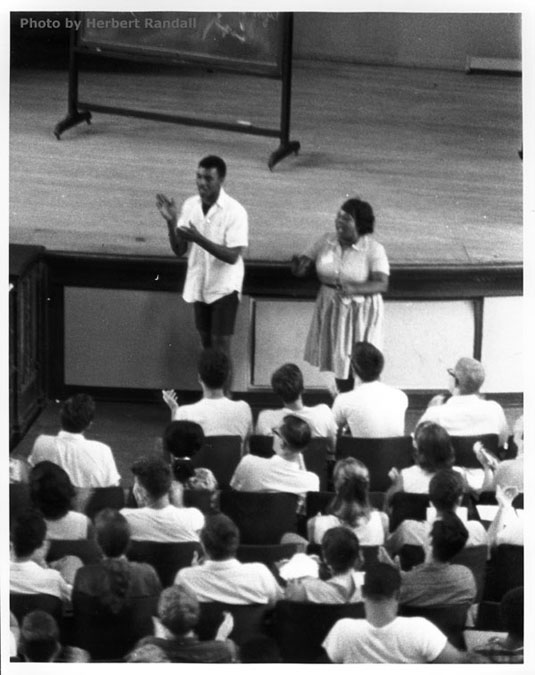 Klan bombings, economic and physical intimidation, and police-state tactics than in Mississippi. In a massively documented narrative history, LOCAL PEOPLE: THE STRUGGLE FOR CIVIL RIGHTS IN MISSISSIPPI (University of Illinois Press, 1994), John Dittmer draws on published materials, archives, oral histories, personal interviews, and reunion conference proceedings to tell the story of the courageous "outside agitators" who came to the Magnolia State to bring about a second Reconstruction and of the heroic "local people" they worked with. Dittmer grounds what happened in the sixties in what went before, starting with the return of black soldiers from World War II and the organizing campaigns they attempted. Aspects of the story have been told elsewhere, either in chapters in books or in memoirs of participants; Dittmer draws on all these materials and many others to paint a rich and multifaceted picture of the movement, nor does he shrink from examining its inner dynamics, conflicting interests and personalities, and weaknesses as well as its moral strength. A work of prodigious scholarship, Dittmer's narrative makes for exciting reading (it probably goes faster if you skip the footnotes, but then you miss out on a lot if you do).
Klan bombings, economic and physical intimidation, and police-state tactics than in Mississippi. In a massively documented narrative history, LOCAL PEOPLE: THE STRUGGLE FOR CIVIL RIGHTS IN MISSISSIPPI (University of Illinois Press, 1994), John Dittmer draws on published materials, archives, oral histories, personal interviews, and reunion conference proceedings to tell the story of the courageous "outside agitators" who came to the Magnolia State to bring about a second Reconstruction and of the heroic "local people" they worked with. Dittmer grounds what happened in the sixties in what went before, starting with the return of black soldiers from World War II and the organizing campaigns they attempted. Aspects of the story have been told elsewhere, either in chapters in books or in memoirs of participants; Dittmer draws on all these materials and many others to paint a rich and multifaceted picture of the movement, nor does he shrink from examining its inner dynamics, conflicting interests and personalities, and weaknesses as well as its moral strength. A work of prodigious scholarship, Dittmer's narrative makes for exciting reading (it probably goes faster if you skip the footnotes, but then you miss out on a lot if you do).
Dittmer’s book should be read in tandem with I'VE GOT THE LIGHT OF FREEDOM: THE ORGANIZING TRADITION AND THE MISSISSIPPI FREEDOM STRUGGLE by Charles M. Payne (University of California Press, 1995). This important analytic history shows how SNCC’s grassroots community organizing approach was based on the pioneering work of the preceding generation of black organizers in rural communities. Payne’s material is drawn largely from oral interviews with movement participants, and his findings challenge many widely held myths. The sectors of the community that responded most readily to SNCC workers were the older generation and the younger; in the middle-aged group, women were much more likely than men to join the movement. Payne traces the tradition of community organizing in rural black communities, especially the role of women in the black church, and shows how SNCC’s idea of grassroots democratic bottoms-up organizing was in synch with this organizing tradition. Payne shows how SNCC’s turn away from grassroots organizing after 1966 and its subsequent emphasis on ultra-radical rhetoric rather than on base-building led to demoralization, demobilization, and finally the victory of the more moderate and establishment-oriented section of the black community over the radicalized poor.
The literature cited in these books is vast. I’ve made sketchy comments on those I’m familiar with.
-- Jeffrey Sokolow
MEMOIRS OF PARTICIPANTS
-
THE MAKING OF BLACK REVOLUTIONARIES by James Forman (University of Washington Press [reprint], 1997). Autobiography by SNCC’s Executive Secretary, who died in 2005. Capsule bio: http://www.stanford.edu/~ccarson/articles/left_2.htm.
-
WALKING WITH THE WIND: A MEMOIR OF THE MOVEMENT by John Lewis with Michael D'Orso (Harvest Books, 1999). Lewis was an early Chairman of SNCC. He is currently a member of Congress from Georgia.
-
READY FOR REVOLUTION: THE LIFE AND STRUGGLES OF STOKELY CARMICHAEL (KWAME TURE) by Stokely Carmichael with Ekwueme Michael Thelwell (Scribner, 2003). Although I’m not a fan of his later politics, I must say this massive, posthumously published autobiography is gracefully written and reflects a gracious spirit.
-
THE RIVER OF NO RETURN: THE AUTOBIOGRAPHY OF A BLACK MILITANT AND THE LIFE AND DEATH OF SNCC by Cleveland Sellers with Robert Terrell (Morrow, 1973)
-
BAREFOOTIN': LIFE LESSONS FROM THE ROAD TO FREEDOM by Unita Blackwell with JoAnne Pritchard Morris (Crown, 2006).
-
MISSISSIPPI HARMONY: MEMOIRS OF A FREEDOM FIGHTER by Winson Hudson and Constance Curry (Palgrave Macmillan, 2002)
-
FREEDOM SONG: A PERSONAL STORY OF THE 1960S CIVIL RIGHTS MOVEMENT by Mary King (William Morrow & Co, 1987). King was a white member of SNCC and co-author with Casey Hayden of “a kind of memo” that helped spark the Second Wave feminist movement of the 1960s.
BIOGRAPHIES
-
THIS LITTLE LIGHT OF MINE: THE LIFE OF FANNIE LOU HAMER by Kay Mills (Dutton, 1993) and FOR FREEDOM'S SAKE: THE LIFE OF FANNIE LOU HAMER by Chana Kai Lee (University of Illinois Press, 1999). Mrs. Hamer was one of the most remarkable grassroots “local people” whose leadership SNCC encouraged.
-
ELLA BAKER: FREEDOM BOUND by Joanne Grant (Wiley, 1998) and ELLA BAKER AND THE BLACK FREEDOM MOVEMENT: A RADICAL DEMOCRATIC VISION by Barbara Ransby (University of North Carolina Press, 2002).The founding mother of SNCC, Ms. Baker was an important figure in building grassroots democratic freedom organizations for decades.
-
AND GENTLY HE SHALL LEAD THEM: ROBERT PARRIS MOSES AND CIVIL RIGHTS IN MISSISSIPPI by Eric Burner (New York University Press, 1992). Bob Moses was legendary. Trained as a mathematics teacher, today he works in Mississippi to build math literacy as a path to college admission. See: RADICAL EQUATIONS: CIVIL RIGHTS FROM MISSISSIPPI TO THE ALGEBRA PROJECT by Robert P. Moses and Charles E. Cobb (Beacon Press, 2001).
-
DIANE NASH: THE FIRE OF THE CIVIL RIGHTS MOVEMENT: A BIOGRAPHY by Lisa Mullins (Barnhardt & Ashe, 2007). Diane Nash was a founding member of SNCC and an important leader in that organization.
HISTORIES
-
IN STRUGGLE: SNCC AND THE BLACK AWAKENING OF THE 1960s by Clayborne Carson (Harvard University Press, 1981). The first history of SNCC and still one of the best books on the organization from start to finish.
-
MANY MINDS, ONE HEART: SNCC'S DREAM FOR A NEW AMERICA by Wesley C. Hogan (University of North Carolina Press, 2007)
-
THE STUDENT NONVIOLENT COORDINATING COMMITTEE: THE GROWTH OF RADICALISM IN A CIVIL RIGHTS ORGANIZATION by Emily Stoper (Carlson, 1989)
-
THE CHILDREN by David Halberstam (Random House, 1998)
-
FREEDOM RIDERS: 1961 AND THE STRUGGLE FOR RACIAL JUSTICE by Raymond Arsenault (Oxford University Press, 2006)
-
WE ARE NOT AFRAID: THE STORY OF GOODMAN, SCHWERNER, AND CHANEY AND THE CIVIL RIGHTS CAMPAIGN FOR MISSISSIPPI by Seth Cagin & Philip Dray (Macmillan, 1988)
CONFERENCE PROCEEDINGS
-
A CIRCLE OF TRUST: REMEMBERING SNCC by edited by Cheryl Lynn Greenberg (Rutgers University Press, 1998)
FILM
-
FREEDOM SONG is a 2000 made-for-TV movie that portrays SNCC organizers and the "local people" they worked with in Mississippi in a realistic fashion. It's based on oral histories by participants, and the characters, while renamed, clearly represent Bob Moses, Chuck McDew, Bob Zellner, and other SNCC staff in Mississippi. It's a bit cheesy at times, but it's much closer to the truth than Hollywood productions like MISSISSIPPI BURNING, which glorified the role of the FBI and trivialized that of the movement. Look for it at the local library or at Netflix. It's well worth showing your children. Freedom is a constant struggle.
-
The documentary series EYES ON THE PRIZE: AMERICA'S CIVIL RIGHTS YEARS 1954–1965 has been reissued in DVD. If you have not seen it before on public television, don’t miss it. Make sure your local public library has copies.
MUSIC
-
The southern freedom movement was a singing movement, and the freedom songs sung at mass meetings gave people the courage to persevere. Two CD collections capture these meetings: VOICES OF THE CIVIL RIGHTS MOVEMENT: BLACK AMERICAN FREEDOM SONGS 1960–1966 (Smithsonian Folkways, 1997) and SING FOR FREEDOM: THE STORY OF THE CIVIL RIGHTS MOVEMENT THROUGH ITS SONGS (Smithsonian Folkways, 1990). “Carry it on.” “Lift every voice and sing.
NOW! UPCOMING! EVENTS! WEBSITES!
A conference will be held in Raleigh, North Carolina, April 15-18, 2010, to commemorate the 50th anniversary of the founding of SNCC. Details will be posted here: http://www.sncc50thanniversary.org/. See also http://crmvet.org/ for information on civil rights movement veterans then and now.
The Civil Rights Movement Veterans website (http://crmvet.org) is a goldmine for information. Includes personal reflections, text of panel discussions, documents, archival resources, links to other sites, historical timelines, bibliographies, etc. "Go and study."
Traveling exhibit– “Freedom's Sisters" is a traveling exhibit highlighting the role of women in the struggle for equality. Panels tell the stories of Harriet Tubman, Mary McLeod Bethune, Ida B. Wells, Septima Clark, Fannie Lou Hamer, Rosa Parks, and 13 other women leaders of the civil rights movement. the exhibit is now in Memphis and will travel to Detroit, Birmingham, Chicago, Dallas and Baltimore during the year. Details available here: http://www.sites.si.edu/exhibitions/exhibits/freedoms_sisters/main.htm.
Note: I have a minor quibble with Payne’s book. In a footnote attached to what I thought was a thoroughly innocuous quotation from Myles Horton, the founder of the Highlander Folk School, about empowering poor people to voice their own concerns and define their needs for themselves, Payne claims that “[t]his is almost a perfect restatement of the mass-line theory of the Chinese Communist party, as described by William Hinton in FANSHEN: A DOCUMENTARY OF REVOLUTION IN A CHINESE VILLAGE.” Since, to my knowledge, Highlander workshop facilitators never incited sharecroppers to kill their landlords nor did they require workshop participants to memorize and recite the sayings of Chairman Horton, for example, this conclusion seems to me entirely gratuitous. (No doubt SDS leaders in 1967 would have compared the same organizing approach to what they imagined to be that of “the Guatemalan guerillas,” with equal lack of justification.) Payne is on surer ground when he talks about the organizing tradition in Mississippi than he is when he attempts comparisons to what he imagines to have been the practice of the Chinese Maoists. IMHO.
IN MEMORIAM: RECENT LOSSES
Late January 2010 saw the deaths of J.D. Salinger , who wrote The Catcher in the Rye, and Howard Zinn, author of A People's History of the United States. Personally, I'll especially miss knowing that Professor Zinn is in the world with us.
READER RESPONSE TO NUMBER 127
Sondra Olsen writes: "I think you had trouble with Olive Kitteridge because it's a story collection. I haven't read the Johnson book, but it seems to me that any worthwhile novel will pull you along faster. As the author of a book of linked stories I can attest that you stop when you've finished writing one story and then start up again slowly, even though you're mindful that you should be speeding the reader along. It's not a completely fair comparison."
REMINDER OF SOME GOOD BOOKS AND HAITI
Phyllis Moore writes, “I bought a copy of BLINDNESS at the Gulf Shores library book sale and read it and THE ROAD by Cormac McCarthy last week. Both novels made me even more aware of what it must be like in Haiti with no public services, no law enforcers, no food, water, doctors, meds, etc.”
She also draws out attention to the 1998 press release on Saramago winning the Nobel Prize: http://nobelprize.org/nobel_prizes/literature/laureates/1998/press.html
PAMELA ERENS ON TURGENEV’S FATHERS AND SONS
Pamela Erens says:"After spending time with Tolstoy and Dostoyevky, Turgenev seems so compact, so pellucid; no wonder Flaubert admired him. Fathers and Sons is both a portrait of a dynamic, even violent time in Russian history (the late 1850s, as feudalism was giving way to a more Western-style economic system) and a universal tale of aimless young men and women and the grownups who don't understand them. In the end it's really about the way we all shuttle between a conviction that life is meaningless and a conviction that even what is transient can be meaningful."
ONLINE
There’s a new issue up of the Internet Review of Books at http://internetreviewofbooks.com
WORKSHOPS
Anndee Hochman has several workshops coming up this year--both short-term and longer, both near and far. Take a look at her website at http://www.anndeehochman.com/events.shtml
NEWS
Peter Brown’s latest children’s book is THE PURPLE KANGAROO. The book written by comedian/actor Michael Ian Black, and illustrated by author/illustrator/juggler Peter Brown. Get book event information at http://www.peterbrownstudio.com/pb-booktour/pb-booktour.html
Marc Harshman has work in the latest issue of La Petite Zine at http://www.lapetitezine.org/Marc.Harshman.htm.
Laura Thompson was awarded Le Cadre d'Or 2010 for her book of poems MOSAIC OF LOVE in the world poetry category, in Paris, France. See http://www.cadredor.org .
Marlen S. Bodden’s novel THE WEDDING GIFT (about a woman given as a gift in slave times) has just been published. See http://www.amazon.com/Wedding-Gift-Marlen-Suyapa-Bodden/dp/1439255830 .
Black Lawrence Press announces DUTCH TREATMENT by D. E. Fredd a collection of three short stories, winner of the Black River Chapbook Competition. The stories are about humans trying to understand themselves and each other, specifically across cultural borders, against the backdrop of war, and within the confines of marriage. The book is available from the Black Lawrence Press website at http://blacklawrence.com/fredd.html
There’s a new short short by Carole Rosenthal in Citron Review at  http://thecitronreview.wordpress.com/2009/12/10/smile/
http://thecitronreview.wordpress.com/2009/12/10/smile/

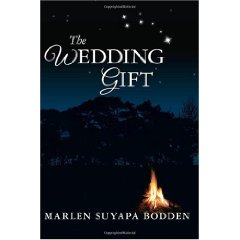
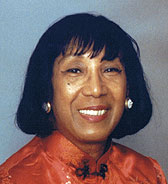
No comments:
Post a Comment